
RISD students create floating mycelium pods to cleanse waterways
[ad_1]
A team of Rhode Island School of Design students and researchers have created tesselated, floating planting beds made of a mycelium biomaterial to cleanse waterways of pollutants and restore wetland habitat.
The floating Biopods act to introduce native plants back to degraded wetland systems while cleansing the water through bioremediation, or the re-introduction of microorganisms that naturally decontaminate their environment.
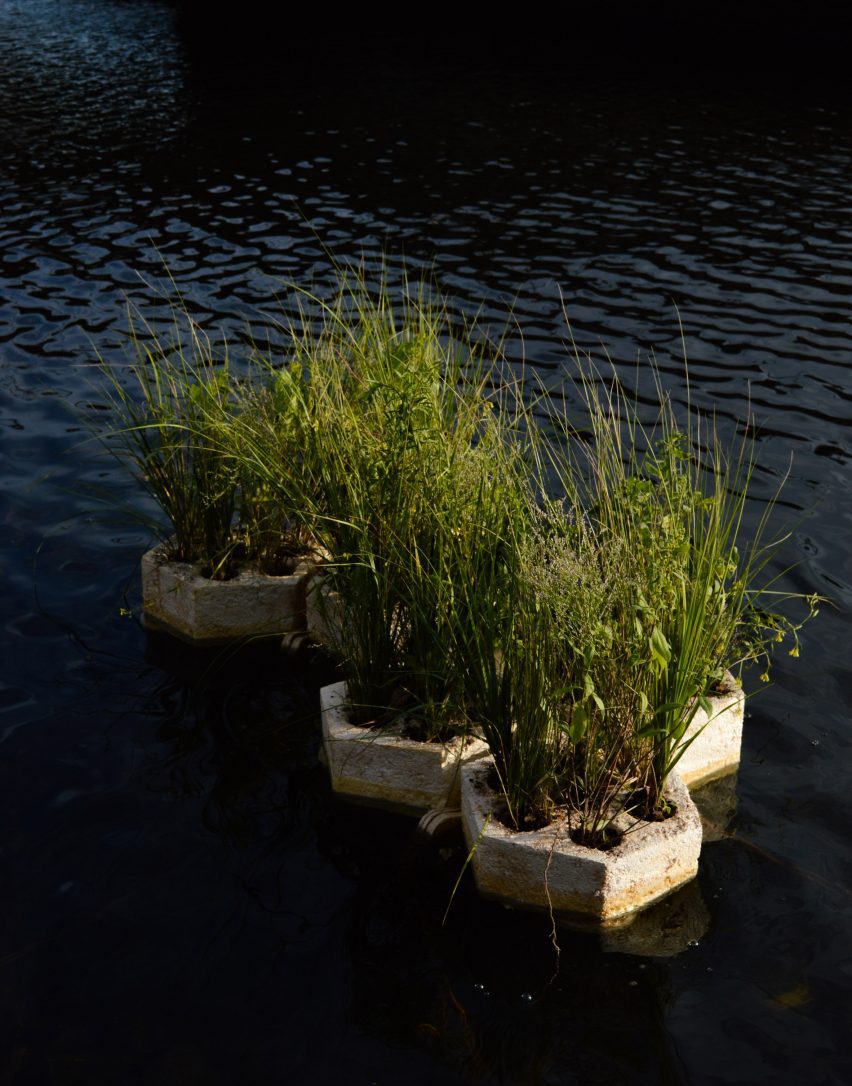
Centred around the Rhode Island School of Design’s (RISD) local waterway, the Providence River, the Biopod team sought to create a small-scale, community-oriented purification system that would help to cleanse the river of historical pollution using organic processes.
“The Biopod project aimed at the introduction of miniaturized wetlands to the Providence River,” project co-lead Avantika Velho told Dezeen.
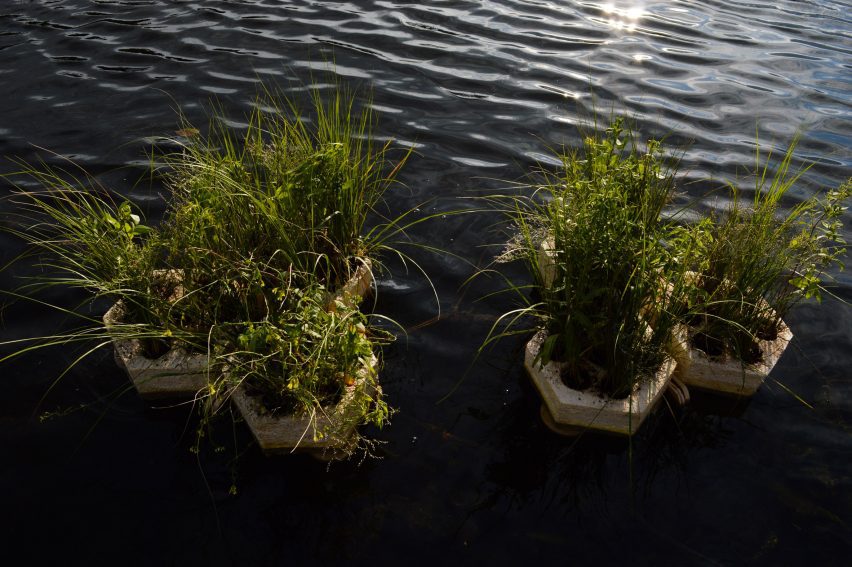
“Because of the urbanization of the Providence River itself, a lot of the wetland that acts to actively remediate plastic pollution had been removed. So the project is really about reintroducing this new biology to kick start these ecosystems again so that the river might repair itself.”
“We were looking a lot to wetlands,” co-lead Manini Banjeree told Dezeen. “We’ve been referring to them as the ‘kidneys of the Earth’ because of how well they accumulate toxins between changing topographic situations like the water, land and the intermediary. They have evolved to hold on to and decontaminate water systems.”
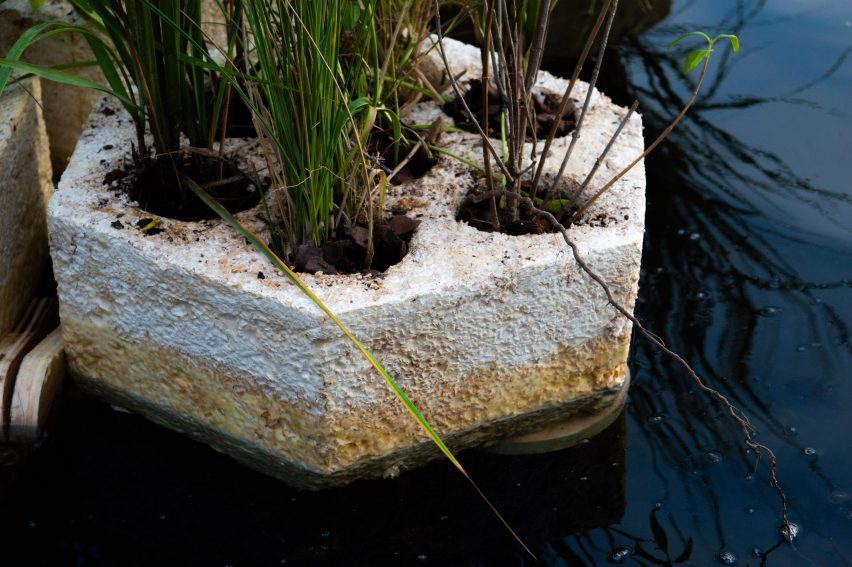
The Biopods are constructed from a hexagonal, 18-inch by 18-inch (45-centimetre by 45-centimetre) floating “mat” made of Reishi mycelium, the root system of the mushroom, that contains several cup-holder-sized pockets. Native, wetland plants were harvested and placed inside each opening so that their roots dangle through to the water below.
The mat acts as an organic, compostable bed that will degrade over time to slowly release the plants into the surrounding waterway. Simultaneously, the mushroom network eats away at heavy metals, heavy oils, pesticides and other toxins found in the water.
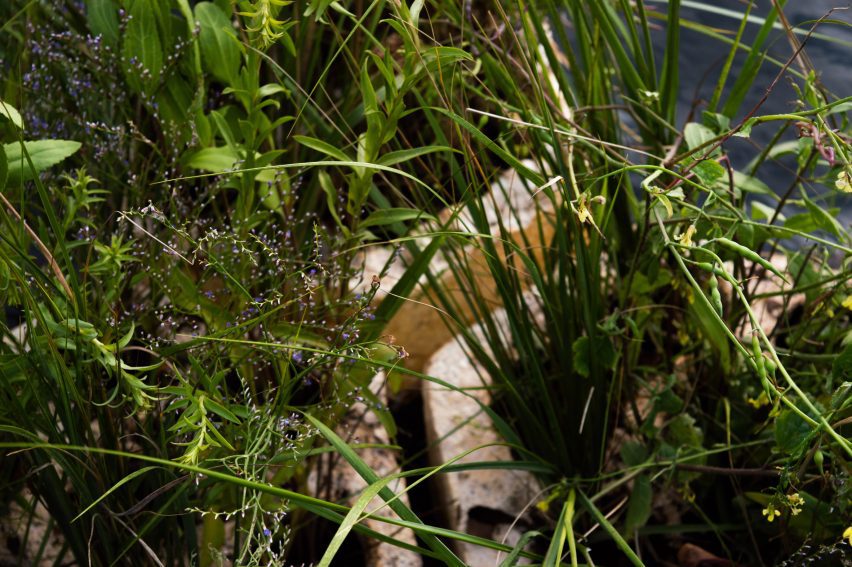
“Mushrooms are really good at breaking down stuff,” said Velho. “They really do a lot of digestion outside their bodies, that’s their main goal in the food web. They’re like the decomposers of the natural world.”
The wetland plants additionally work to filter out toxins, cleansing pollutants through a process similar to how humans metabolize our food, according to Velho.
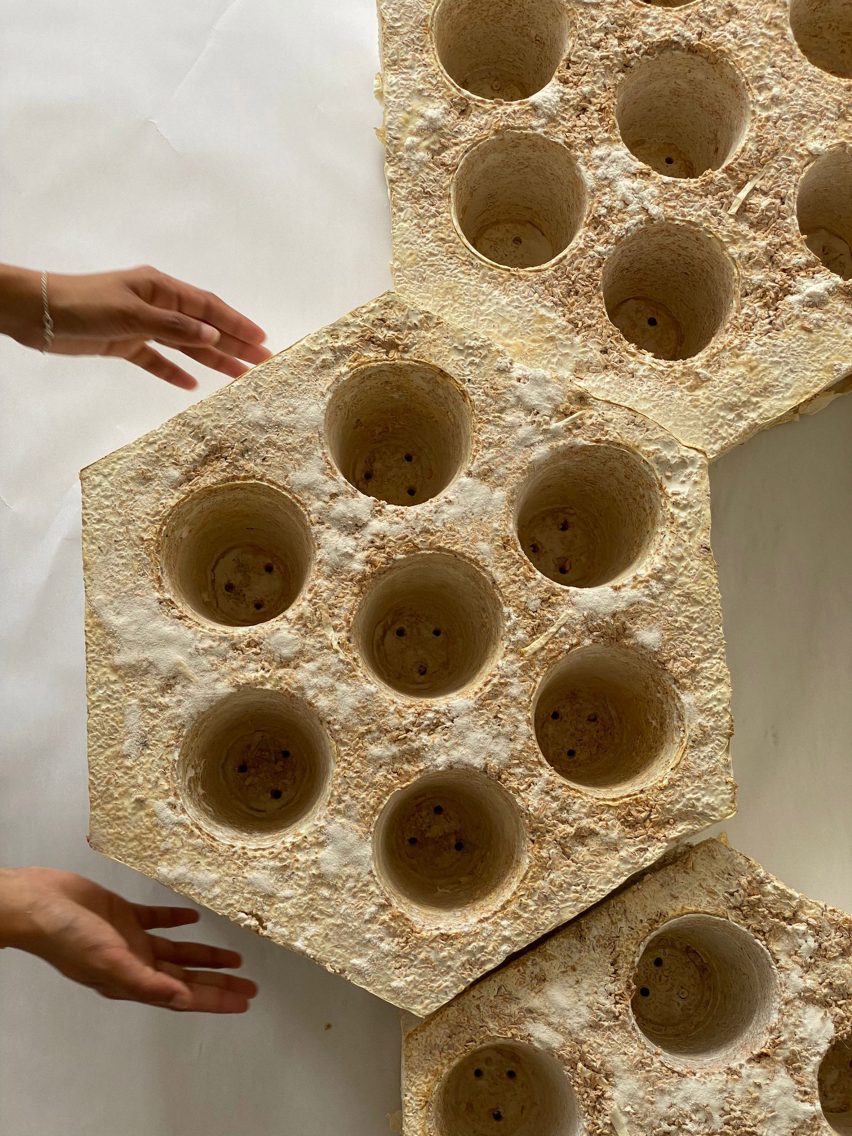
Additionally, their submerged roots create a small ecosystem for algae and microbes.
The team sought to make the Biopod system accessible; if the project is further developed it will be available for community members to make it themselves.
The Biopods are constructed by tightly packing mycelium into a hexagonal, plexiglass mould with reusable plastic cups placed in the centre to create small, cylindrical planting beds for the wetland plants.
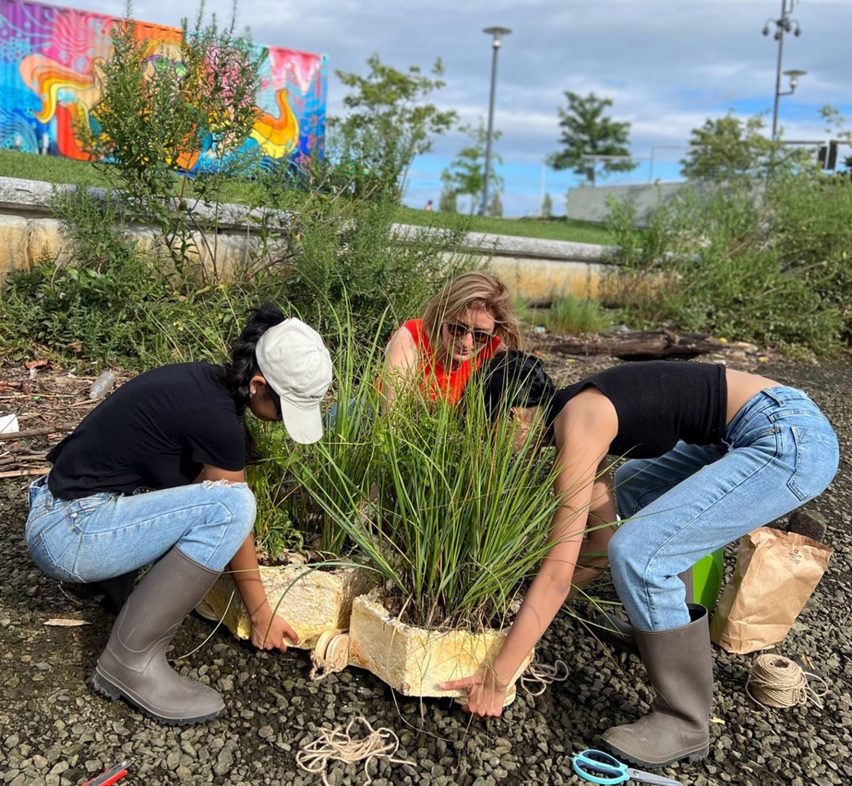
Coconut oil and beeswax are then used as a coating and for reinforcement.
Once in the water, the structure can float individually or interlock with other Biopods to create what the team describes as a “mat of floating marsh”.
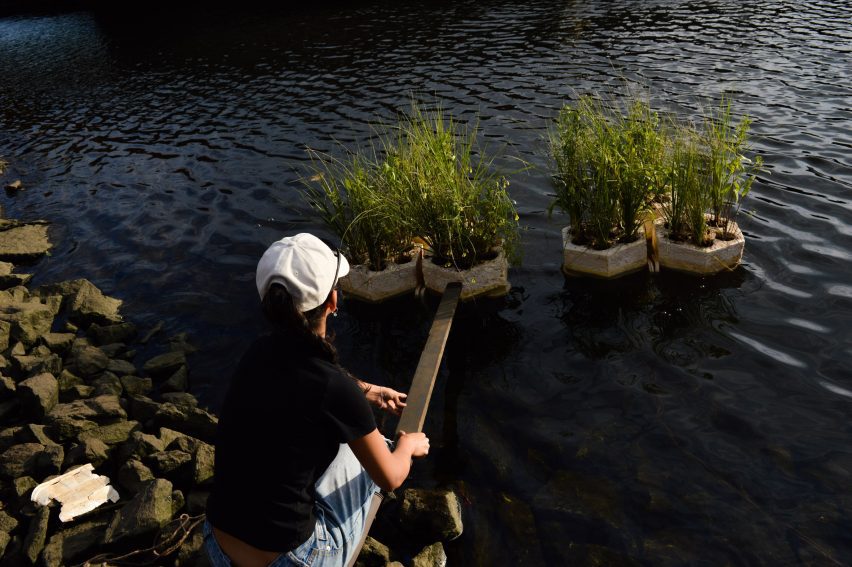
The mycelium base of the Biopod will go on to “live” for an estimated fiver months before it fully degrades to disperse the plants inside.
The team set several Biopods afloat in the Providence River before having to pull them out after two months.
Results showed microplastic accumulation within the pods under magnification, as well as “shoot morphology”, or buds, from the wetland plants–indicating a healthy ecosystem.
Velho and Banjeree explained that there are several routes the project could take, although the first step is to prove the Biopod’s efficacy to organizations like the EPA.
“It’s interesting, the relationships that we have to biomaterials and the way that we are connected to systems that have the potential to remediate in a way that isn’t electricity intensive or chemically intensive,” said Banjeree.
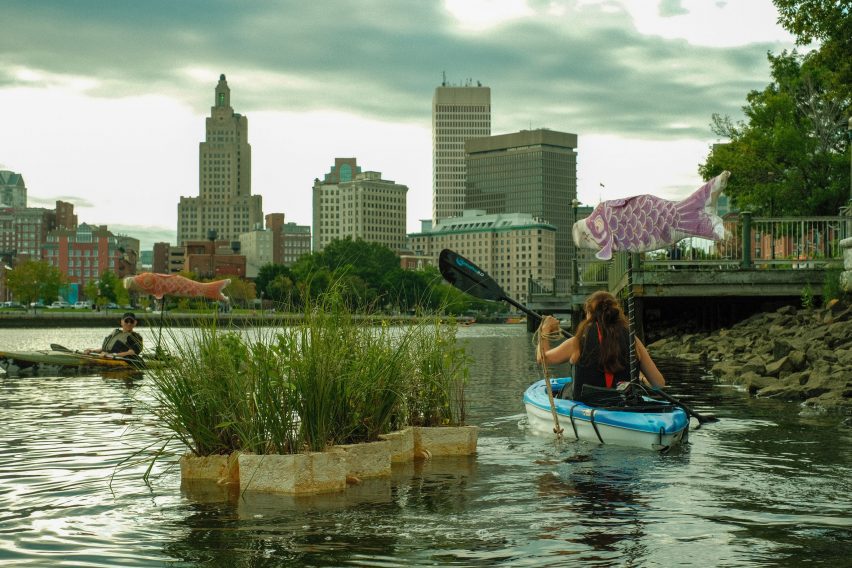
“It’s about having that shift in perspective to solve problems in a way that is not very technologically intensive. Thinking about a product that can be grown but not built.”
The Biopod project was supported by RISD’s Inaugural Somerson Sustainability Innovation Fund (SSIF) grant, which funds research projects combining art and design.
Dezeen put together a round-up of technology that mitigates river pollution, including bubble curtains and a googly-eyed trash boat.
The photography is courtesy Biopod unless otherwise stated.
Project credits:
Rhode Island School of Design team
Faculty lead: Dr. Katia Zolotovsky
Biodesign co-leads: Manini Banerjee, Avantika Velho
Graphics and visualisation: Varun Mehta
Post-award research administrator I: Niko Lazarakis
Director of research: Soul Brown
Advisory:
Founder of Living Systems Laboratory: Eugene Bernat
RISD gradutate student: Skylar Perez
Design researcher: Vrinda Mathur
Edna w. Lawrence Nature Laboratory team:
Interim director: Jennifer Bissonnette
Staff biologist & collections manager: Benedict Gagliardi
Visualization and imaging research associate: Georgia Rhodes
Botanist, RISD lecturer: Hope Leeson
Waterfire Providence team:
Founder: Barnaby Evans
Arts management intern: Emily Gray
Stormwater Innovation Center team:
Education and outreach coordinator: Rebecca Reeves
Stormwater center Director: Ryan Copp
Director of restoration: Wenley Ferguson
Community volunteers: Akhil Kulkarni, Phoenix Inouye, Shamika Velho, Anjini Banerjee
[ad_2]





